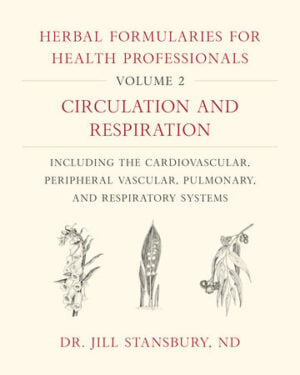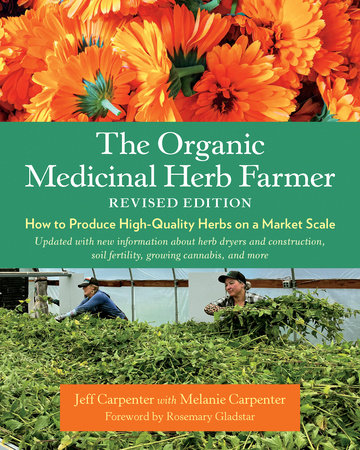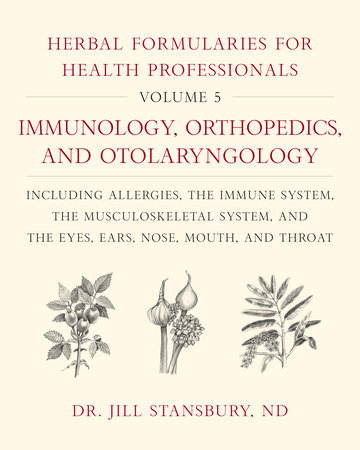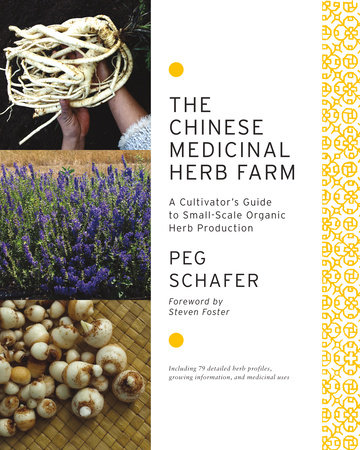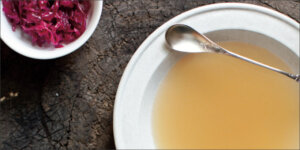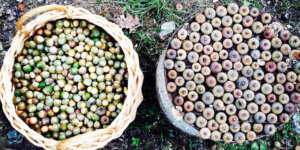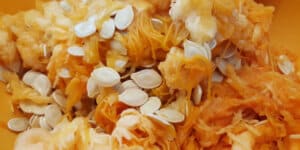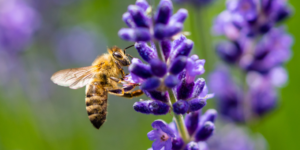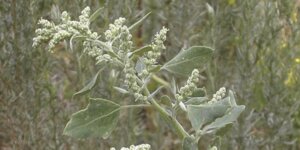Mastering the Actions of Herbs
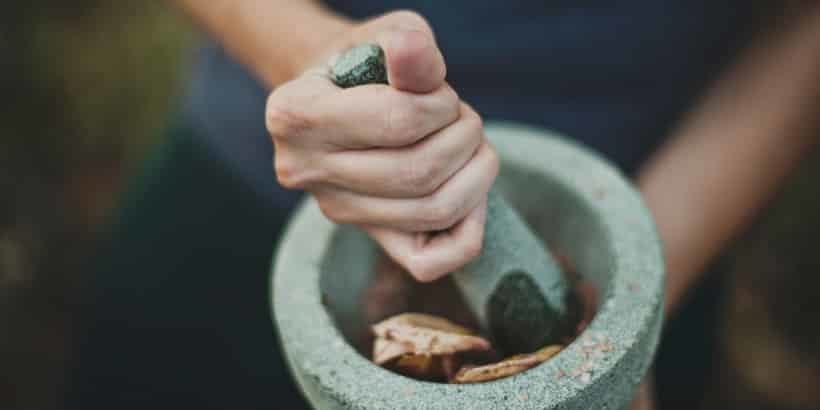
Want to become a master in medicinal herbs? The first step to using these herbs successfully is understanding the actions of each one and how they work to treat an individual patient’s symptoms.
The following excerpt is from Herbal Formularies for Health Professionals, Volume 2 by Dr. Jill Stansbury. It has been adapted for the web.
Mastering the Actions of Herbs
Herbal clinicians should have an excellent grasp of primary actions while gaining a solid knowledge of materia medica and specific indications. Clinicians should know which herbs are the best antispasmodics for a variety of situations, the best anti-inflammatories, the best vulneraries, the best nervines, the best antimicrobials, and so on.
Such actions of herbs are also foundational considerations when creating an herbal formula or when considering which herbs to select as a tonic base, synergist, and specific of a formula triangle.
Medicinal Herb Actions
Actions include antispasmodics, antimicrobials, carminitives, alteratives, adaptogens, demulcents, vulneraries, and so on.
For example, individual antispasmodic herbs might be categorized as having an affinity for a certain organ system or being best suited for a particular quality of spasm.
Consider the following antispasmodics: Lobelia is especially indicated for respiratory smooth muscle and cardiac muscle spasms, Dioscorea is specific for twisting and boring muscle spasms about the umbilicus, Piper methysticum can allay acute musculoskeletal pain and urinary spasms, and Viburnum opulus or prunifolium is especially effective for spasms of the uterine muscle.
Focus on the Action of the Herbs
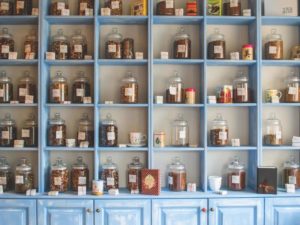
When treating bronchitis, for example, be it a dry hacking cough or a cough with abundant free expectoration, rather than asking what herbs are “good for bronchitis,” I encourage clinicians to ask themselves, “What actions do I need this formula to perform?”
In this case, we need to tailor the formula to the individual and select herbs with specific desired actions—expectorant action for a wet cough or a demulcent action for a dry cough.
What Do You Want the Herbs to Do?
We may want herbs with an antispasmodic action on respiratory smooth muscle, and we may want herbs with strong antimicrobial actions for bronchitis due to respiratory viruses and other microbes.
Throughout this text, the comments that accompany each formula mention actions we are attempting to accomplish with the recipe.
For example, “Lobelia is included here as a reliable bronchodilator and respiratory antispasmodic,” or “Lomatium is one of the most well-known respiratory antiviral herbs.”
Thinking Through Herbal Formulas
When thinking through an herbal formula, especially for difficult or complex cases, it is useful to write down what actions you wish the formula to perform and then list several herbs that perform this action.
The next step is to consider any specific indications for the listed herbs to help narrow in on the best choices.
And finally, the most nourishing herbs may be chosen as supporting the foundation of the triangle, a base on which the formula may rest.
Other herbs from the action lists may then be chosen as specifics or synergists to best offer all the needed actions, while creating energetically specific, finely tuned formulas.
Energetic Fine-Tuning
Using the triangle method and an awareness of the actions of herbs, as detailed above, will assist you in selecting three or more herbs that address a case in its entirety, and as such, the formulas are likely to be effective and successful.
To fine-tune your formulas even further, an added tier of specificity is the energetic state of your patient. TCM philosophy often depicts the energetic state as a mixture of polar opposites in keeping with the Taoist philosophy of yin and yang polarities.
For example, is your patient hot or cold? Tight and constricted or loose and atrophic? Excessively damp in the tissues or excessively dry? Tired and lethargic or energized and manic—and so on. Ayurveda, the traditional medical system of ancient India, sets up a three-pronged system of doshas—vata, pitta, and kapha—rather than the two-pronged polar opposites of Taoism but is similarly aimed at addressing differing constitutions and energetic presentations.
The Four-Elements Theory
The four-elements theory of ancient Western herbalism looks for symptoms or presentations categorized into earth-, air-, fire-, and water-related symptoms, with herbal therapies being chosen accordingly.
Again, the precise system, vernacular, and approach do not matter, as long as you are aware of some sort of energetic presentation.
Whether or not you take it upon yourself to learn the doshas, TCM, or four-elements thinking and prescribing, you can still begin to notice whether a patient is hot or cold, damp or dry, for example, and choose herbs based on the specific clues or symptoms that you discern through thorough questioning and from simple and obvious physical exam findings.
Using Clues to Choose Herbs
For example, a hypertension patient may present with episodes of elevated blood pressure related to ongoing job and family stress. The person also suffers from insomnia, frequent muscle tension headaches, and mild digestive upset, also stress related.
A hypertension formula for this case might be based on the nervine vasodilators, such as Passiflora, Tilia, or Rauvolfia, resting on a base of Avena as a nervous system trophorestorative. The actions desired for stress-related hypertension are vasodilators with anxiolytic and calmative effects.
Choosing Desired Actions
If, on the other hand, hypertension is unrelated to stress, but rather has slowly progressed over a decade related to worsening diabetes and long-term smoking, improving blood vessel tone and elasticity would be desired actions, as well as offering antioxidant and hypoglycemic effects to help protect the blood vessels from high blood sugar and the toxic effects of smoking.
In this case, Ginkgo and Angelica might offer mild vasodilating effects while helping to protect blood vessel walls.
Salvia miltiorrhiza might be capable of improving circulation damaged by smoking and diabetes, and the formula might rest on a nourishing base of Crataegus, whose procyanidins might improve the integrity of vein and artery walls.
With these examples, it is easy to see how herbal formulas for hypertension might be very different when the underlying causes are considered and herbs with specific actions are selected.
The Use of “Toxic” Herbs in Formulas
In the sample case of insomnia with exhaustion where Zingiber is used as a synergist because of its heating and moving energetic qualities, Zingiber might be used in a lesser proportion than the other two herbs, in order to ensure the formula is overall nourishing, restorative, and tonifying. Zingiber is not particularly toxic, but due to its strong energy, there is a minor concern over its proportion in a formula.
This is especially true for caustic, irritating, or outright toxic botanicals.
Some such toxic or otherwise powerful herbs have strong moving or driving action: Phytolacca is a lymph mover, Gentiana is a bile mover, Rhamnus is an intestinal smooth-muscle mover, Sanguinaria is a tissue mover, and Pilocarpus is a secretory stimulant.
All are used in formulas in a small or lesser quantity than the lead herbs, and yet their presence is equally contributory and as powerful as the other primary ingredients.
Effects of Medicinal Herbs
The case is the same when energy or motion is excessive, and a goal of the formula is to calm and soothe or to quiet down an excessively hot or hyperfunctioning action in a tissue or organ.
Veratrum, Aconitum, Atropa belladonna, Digitalis, Lobelia, and Conium all have powerful relaxing, sedating, diminishing effects on nerve, cardiac, respiratory, and musculoskeletal tissues, appropriate only in small amounts in the overall formula.
Herbs with Strong Energies
In many cases, herbs with such extremely strong energies are added to formulas only when extremely strong imbalances are occurring. In general, the stronger and potentially toxic or harsh the herb, the smaller the dose in the formula.
And yet even that milliliter, or as little as five drops, drives the formula and contributes equally to the other herbs occurring at a dose of 10 or even 100 times the amount.
The smaller the degree of atrophy/hypertropy or the more minor the degree of imbalance of hot/cold or excess/deficient status of the body, the less the need for any strong energy herbs, and the more the formula can be based on purely nourishing and restorative ingredients for the base, synergist, and specific alike.
Recommended Reads
Recent Articles
You’ve Been Missing Out! Bone Broth is the ultimate superfood, packed with nutrients and goodness. Consider adding this nutrient-rich, immune system boosting bone broth into your daily diet.
Read MoreThese small fruits are a delicious source of nutrients that you can find almost anywhere. Get started on acorn harvesting with help from these simple tips!
Read MoreWondering what to do with pumpkin seeds? Instead of roasting them, try these alternative ways to prepare & use seeds! Plus a must-try pumpkin granola recipe.
Read MoreTired of trying different traditional medicines to relieve inflammation and joint pain? We have the perfect solution: honey bee venom.
Read MoreBefore yanking out the next patch of lambsquarter you find in your yard or garden, consider trying one of the many edible and medicinal uses of this “super weed.”
Read More

